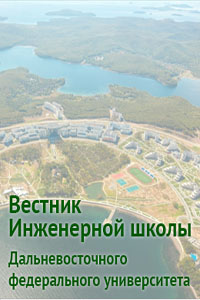Anthropometric standardization when designing office space and communications elements on a cruise ship
DOI:
https://doi.org/10.24866/2227-6858/2024-1/27-40Keywords:
ergonomics, anthropometric factor, passengers with disabilities, ship habitability, office premises, navigation bridge, wheelhouse, workplace, safetyAbstract
The article discusses the consideration of the anthropometric factor when designing some office spaces and communication elements of a cruise ship. The purpose of the study is to improve crew efficiency and accommodation for passengers with disabilities on a cruise ship. To do this, it is necessary to take into account the psychophysiological characteristics of a person, since the productivity and safety of the liner directly depend on the work of the ship’s crew. An analysis of the principles of human interaction with ship devices and systems is carried out. The article focuses on the design of gangways and communication elements for groups of passengers with limited mobility, as well as the work of the crew with ship controls and auxiliary instruments, taking into account the anthropometric factor. The findings indicate the need to standardize ergonomic requirements in the practice of designing cruise ships to obtain not only comfortable living conditions, but also to increase the efficiency of the crew, which in turn affects the safety of ship passengers.
References
Эволюция обводов крейсерско-гоночных яхт // Домашняя яхт-верфь. URL: https://yachtshipyard.wordpress.com/2011/07/16/ (дата обращения: 15.12.2023)
Архитектура судна. Классификация судовых помещений // Корабельный портал. URL: http://korabley.net/news/arkhitektura_sudna/2011-10-17-986 (дата обращения: 05.12.2023)
Мостик (морской термин): // Википедия: свободная энциклопедия. URL: https://ru.wikipedia.org/wiki/Мостик_(морской_термин) (дата обращения: 25.12.2023)
Водный транспорт, теория и практика, все о морских и речных судах. Устройство и техническая эксплуатация судна. URL: http://wc.matrixplus.ru/utes03-004.htm (дата обращения: 17.12.2023)
Guidance notes on the application of ergonomics to marine systems // American Bureau of Shipping. URL: https://ww2.eagle.org (дата обращения: 17.12.2023).
Downloads
Published
Issue
Section
License
Copyright (c) 2024 Far Eastern Federal University: School of Engineering Bulletin

This work is licensed under a Creative Commons Attribution 4.0 International License.

